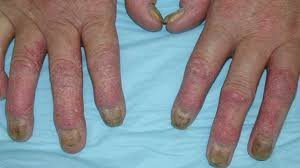Arthritis is a situation that impacts the joints, typically inflicting ache, stiffness, and diminished mobility. Understanding when it could possibly start is vital to staying proactive about joint well being. Whereas many affiliate arthritis with older age, it doesn’t solely have an effect on senior residents. This situation can floor at numerous levels of life, relying on the sort and components influencing its improvement.
Timing of Arthritis
Opposite to in style perception, arthritis doesn’t solely have an effect on older adults. Whereas a major variety of circumstances are identified in people over the age of 60, it could possibly emerge throughout youth, adolescence, and even childhood. Juvenile arthritis, a selected class of the situation, impacts kids beneath 16 years outdated and consists of quite a lot of subtypes. Younger adults may expertise this, with autoimmune varieties resembling rheumatoid arthritis typically showing between the ages of 30 and 50. These totally different varieties exhibit how arthritis just isn’t confined to 1 age group however can manifest at numerous life levels.
The timing of when it develops typically is determined by genetic predisposition, life-style decisions, or underlying well being issues. These with a household historical past of autoimmune situations or joint-related points might expertise signs earlier. Understanding danger components and common monitoring might help determine indicators earlier than its development considerably impacts day by day life.
Components of Arthritis
A number of components contribute to when signs may start. Genetics can play a task, as people with a household historical past have a better probability of creating the situation. Autoimmune situations, the place the immune system mistakenly targets wholesome joint tissues, also can set off it early in life. Rheumatoid arthritis, for instance, is an autoimmune situation that usually begins when persons are of their 30s or 40s.
Excessive-impact sports activities, repetitive movement accidents, or demanding bodily labor place extra pressure on joints, doubtlessly resulting in early put on and tear. Weight problems will increase joint stress, significantly in weight-bearing areas just like the knees and hips, which may speed up the event of osteoarthritis. Consciousness of those components and making changes, resembling sustaining a wholesome weight and avoiding joint stress, considerably impacts long-term joint well being.
Varieties of Arthritis
Every sort has totally different patterns and timelines for improvement. Osteoarthritis, essentially the most prevalent kind, typically arises after age 50 and is often tied to the pure put on and tear of cartilage over time. Nevertheless, joint accidents earlier in life, even throughout one’s 30s or 40s, might prematurely set off osteoarthritis.
Rheumatoid arthritis, which stems from the immune system’s assault on joints, typically begins between 30 and 50. It progresses over time and is totally different from osteoarthritis because it includes irritation reasonably than mechanical put on on cartilage. Juvenile arthritis is one other distinct sort, affecting kids and adolescents beneath 16, with signs resembling swelling and joint ache. These variations in sorts spotlight the significance of understanding that the onset age relies upon largely on the particular type of the situation.
Recognizing early warning indicators of arthritis is vital to managing signs and stopping long-term problems. No matter age, joint ache, stiffness, swelling, or issue transferring shouldn’t be ignored. Looking for an analysis by a healthcare supplier helps make clear whether or not it’s current and what therapy plan may work greatest. Life-style changes typically play a major function in managing signs. Balanced diet can complement these efforts with meals recognized to scale back irritation, resembling leafy greens and omega-3-rich fish.
Take Management of Your Joint Well being Right now
Arthritis can start at almost any stage of life, and its impression varies relying on the sort and underlying causes. Gaining insights into signs and their potential onset intervals might help people take proactive steps towards improved joint well being. By addressing contributing components like weight, accidents, and household historical past, in addition to implementing supportive habits, you may handle successfully at any age.
